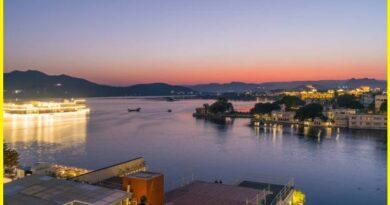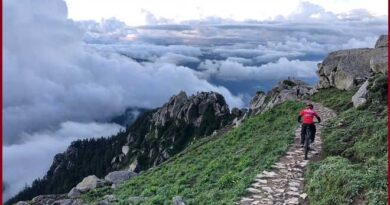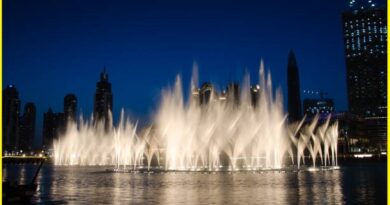Cultural and Modern Marvels: Top Things to Do in Tirana
Tirana things to do
Tirana, the capital of Albania, offers a blend of historical, cultural, and modern attractions. Here are some top things to do in Tirana.
Historical and Cultural Sites
Skanderbeg Square
Skanderbeg Square is the central and most prominent square in Tirana, Albania. It is named after Gjergj Kastrioti Skanderbeg, the national hero of Albania, who led a rebellion against the Ottoman Empire in the 15th century. The square is a focal point of the city, both historically and culturally, and several key landmarks surround it. Key Features and Attractions included the Statue of Skanderbeg, the National History Museum, Et’hem Bey Mosque, and Clock Tower (Kulla e Sahatit). Best activities included–
Public Gatherings and Celebrations-Skanderbeg Square is the primary location for public gatherings, national celebrations, and cultural events. It hosts concerts, festivals, and political rallies, reflecting its role as the city’s social and cultural hub.
Pedestrian-Friendly Zone- The square has been redesigned to prioritize pedestrians, with wide open spaces, fountains, and greenery. It’s a great place for a stroll, people-watching, or relaxing on a bench. Cafes and Restaurants- Surrounding the square are numerous cafes and restaurants where visitors can enjoy traditional Albanian cuisine, coffee, or a refreshing drink while taking in the lively atmosphere.
National History Museum
The National History Museum in Tirana, Albania, is the largest and most comprehensive museum in the country, offering a deep dive into Albania’s rich and varied history. The museum is prominently located on the north side of Skanderbeg Square, making it easily accessible for visitors exploring the city center. The building itself is notable for its large mosaic on the facade, titled “The Albanians,” which depicts various historical figures and moments from Albania’s past.
Also read- North Macedonia-The Land of Alexander the Great and an Incredible Landscape
The National History Museum in Tirana is a must-visit for anyone interested in understanding the complex and rich history of Albania. Its extensive collections and well-organized exhibits provide a comprehensive look at the nation’s past, making it an invaluable cultural and educational resource. Whether you are a history enthusiast, a student, or a casual visitor, the museum offers a deeply engaging and informative experience.
Et’hem Bey Mosque
The Et’hem Bey Mosque is one of the most important and beautiful historical landmarks in Tirana, Albania. The construction of the Et’hem Bey Mosque began in 1791 and was completed in 1821. It was initiated by Molla Bey and finished by his son, Haxhi Et’hem Bey, after whom the mosque is named. The mosque reflects the architectural style and influence of the Ottoman Empire, which ruled over Albania for several centuries.
The Et’hem Bey Mosque is a symbol of religious faith and resilience for the people of Tirana. During the communist regime, all religious practices were banned, and many religious buildings were destroyed or repurposed. The Et’hem Bey Mosque, however, survived this period. While the mosque is a place of worship, it is also open to visitors outside of prayer times. Respectful attire is required, and visitors may need to remove their shoes before entering the prayer hall.
Pyramid of Tirana
The Pyramid of Tirana, originally known as the Enver Hoxha Museum, is one of the most distinctive and controversial landmarks in Albania’s capital. The Pyramid was designed by a group of architects, including Enver Hoxha’s daughter, Pranvera Hoxha, and her husband, Klement Kolaneci. It was constructed in 1988 and initially served as a museum dedicated to Enver Hoxha, the long-time communist leader of Albania.

The Pyramid of Tirana is a fascinating landmark that encapsulates the complex history and ongoing transformation of Albania. Visiting this landmark is an unbelievable experience. Whether viewed as a relic of the past or a beacon for the future, it remains an integral part of Tirana’s urban landscape and cultural narrative. A visit to the Pyramid provides a unique insight into the country’s journey and its aspirations for the future.
Bunk’Art
Bunk’Art is a unique cultural attraction in Tirana, Albania, offering visitors a glimpse into the country’s history during the communist era. Bunk’Art consists of two underground bunkers built during the communist regime of Enver Hoxha. These bunkers were constructed as shelters and military installations in case of nuclear war or other emergencies. After the fall of communism, these bunkers were repurposed into museums to preserve and showcase Albania’s history and heritage from that era.
A series of bunkers converted into museums showcasing Albania’s history during the communist period. Bunk’Art 1 is located on the outskirts of Tirana, while Bunk’Art 2 is in the city center. Both Bunk’Art locations are accessible to visitors, with ramps and elevators available for those with mobility issues. Guided tours are available at both sites, providing informative commentary and context to the exhibits.
House of Leaves
The House of Leaves, located in Tirana, Albania, is a museum that offers a unique and immersive experience into the country’s history of surveillance and espionage during the communist regime. The House of Leaves was originally a secret surveillance facility operated by the Sigurimi, Albania’s secret police, during the communist era under Enver Hoxha. After the fall of communism, the building was transformed into a museum to document and educate visitors about the methods and extent of surveillance used by the regime.
The House of Leaves is located in the center of Tirana, making it easily accessible for visitors exploring the city. Guided tours are available for visitors who wish to learn more about the exhibits and the history of surveillance in Albania. Knowledgeable guides provide context and answer questions. There is an admission fee for entry to the museum, with discounts available for students, seniors, and groups.
Outdoor and Recreational Activities
Grand Park (Parku i Madh)
Tirana’s Grand Park, or Parku i Madh, is a significant green space in the city, offering locals and visitors a place for relaxation, recreation, and outdoor activities. It’s a large urban park located near the city center, providing a natural oasis amidst the hustle and bustle of urban life.
The park features lush greenery, walking and jogging paths, playgrounds, sports facilities, and picnic areas. It’s a popular destination for families, fitness enthusiasts, and anyone seeking a break from the city’s streets. Additionally, Tirana’s Grand Park often hosts cultural events, concerts, and festivals, making it not just a recreational space but also a hub for community gatherings and entertainment.
Parks like Tirana’s Grand Park play a vital role in enhancing the quality of urban life, offering residents and visitors a place to connect with nature, unwind, and enjoy leisure activities.
Mount Dajti National Park
Mount Dajti National Park is a prominent natural attraction in Albania, located just east of the capital city, Tirana. It is a popular destination for both locals and tourists seeking outdoor activities and scenic views. The park is centered around Mount Dajti, which rises to an elevation of 1,613 meters. The mountain provides a stunning backdrop to Tirana and is visible from many parts of the city. The national park covers an area of about 29,384 hectares, offering a vast expanse of natural beauty.
There are numerous trails of varying difficulty, making Mount Dajti National Park a great destination for hikers and trekkers. The trails offer panoramic views of the surrounding landscapes. The Dajti Ekspres cable car is a popular way to reach the mountain. It provides a scenic ride from the outskirts of Tirana to the Dajti plateau, offering spectacular views along the way. The park has designated picnic areas where visitors can relax and enjoy the natural surroundings. For adventure enthusiasts, the park offers opportunities for paragliding and mountain biking.
Modern Attractions and Leisure
Blloku District
The Blloku District, also known simply as “Blloku,” is one of the most vibrant and trendy neighborhoods in Tirana, the capital city of Albania. Its transformation from a restricted area during the communist era to a bustling hub of activity is a testament to Tirana’s dynamic evolution. During the communist regime led by Enver Hoxha, Blloku was a restricted area reserved for the communist elite. It was off-limits to the general public and housed the residences of high-ranking officials.
The Blloku District represents the modern, dynamic face of Tirana, offering a blend of history, culture, and contemporary urban living. Whether you’re looking to explore its rich past, enjoy its lively social scene, or simply take in the urban vibe, Blloku is a must-visit neighborhood in the Albanian capital
Tirana International Film Festival
The Tirana International Film Festival (TIFF) is one of the most significant cultural events in Albania and a key fixture in the international film festival circuit. The Tirana International Film Festival was established in 2003. TIFF aims to showcase a wide range of films from around the world, providing a platform for filmmakers to present their work to an international audience. The festival promotes cultural exchange and supports the growth of the film industry in Albania and the region.
The Tirana International Film Festival is not only a celebration of cinema but also an important cultural event that enriches the artistic landscape of Tirana and Albania as a whole. It provides a unique opportunity for filmmakers and audiences to engage with diverse cinematic voices from around the world.
Unique Experiences
New Bazaar (Pazari i Ri)
The New Bazaar, known locally as Pazari i Ri, is a vibrant and historic marketplace located in Tirana, Albania. It’s one of the city’s most popular attractions, offering a lively mix of traditional and modern elements. The New Bazaar has been a central part of Tirana’s commercial life for over a century. It’s historically known as a bustling market where locals buy fresh produce and other goods. Must-visit attraction is Architecture- The renovated bazaar features colorful buildings with traditional architectural elements, creating a visually appealing and inviting atmosphere. The design combines historical styles with contemporary aesthetics.
Market Stalls- The market is filled with stalls selling a wide variety of goods, including fresh fruits and vegetables, meats, dairy products, spices, and local delicacies. It’s a great place to experience the local food culture and buy fresh ingredients. Crafts and Souvenirs- Besides food items, the bazaar also offers handcrafted goods, souvenirs, and artisanal products. It’s an excellent spot for finding unique gifts and mementos.
Tanners’ Bridge
Tanners’ Bridge, known as “Ura e Tabakëve” in Albanian, is a historical landmark in Tirana, Albania. It is one of the few surviving Ottoman-era structures in the city, offering a glimpse into Tirana’s past. Tanners’ Bridge dates back to the 18th century during the Ottoman period. It was part of a network of roads and bridges that facilitated trade and transportation in the region. The bridge was originally used by tanners to transport their goods to the market.
The area around the bridge was historically a tannery district, which is how the bridge got its name. Today, Tanners’ Bridge is a popular tourist attraction. It is often included in walking tours of the city, where visitors can learn about its history and significance. The bridge’s picturesque setting also makes it a popular spot for photography.

Art and Architecture
National Gallery of Arts
The National Gallery of Arts, known as “Galeria Kombëtare e Arteve” in Albanian, is a significant cultural institution in Tirana, Albania. It plays a crucial role in preserving and showcasing the country’s artistic heritage. The National Gallery of Arts was established in 1946. It is located in the heart of Tirana, on “Bulevardi Dëshmorët e Kombit,” one of the city’s main boulevards. The central location makes it easily accessible for both locals and tourists. For tourists, the National Gallery of Arts is a must-visit destination to gain insight into Albanian culture and history through its art.
The Cloud
“The Cloud” in Tirana, also known as “Reja” in Albanian, is an intriguing and popular public art installation created by the renowned Japanese architect Sou Fujimoto. Sou Fujimoto, a prominent Japanese architect known for his innovative and minimalist designs, created “The Cloud.” “The Cloud” in Tirana is a striking example of how contemporary art can transform and enliven public spaces. Its innovative design by Sou Fujimoto and its role as a cultural hub makes it a significant and cherished part of Tirana’s urban environment.
Day Trips
Kruja
Kruja (also spelled Krujë) is a historic town in Albania, renowned for its rich cultural heritage and historical significance. It is often considered the “cradle of Albanian resistance” due to its association with the national hero, Skanderbeg. Kruja is best known for its association with Gjergj Kastrioti, also known as Skanderbeg, who led the resistance against the Ottoman Empire in the 15th century. Skanderbeg’s successful defense of Kruja against the Ottomans made the town a symbol of Albanian resistance and independence.
Kruja is home to several important religious sites, including the Teqe of Dollmë, a Bektashi-order monastery, and the Saint Nicholas Church. The town is located near Mount Kruja, offering opportunities for hiking and enjoying the natural beauty of the area. The trails provide scenic views and the chance to explore the rugged terrain.



